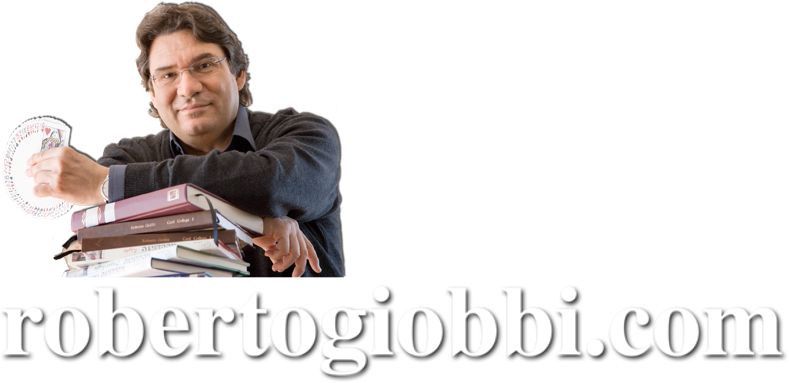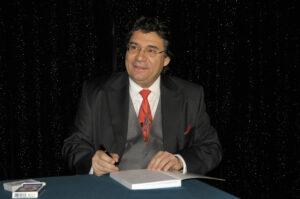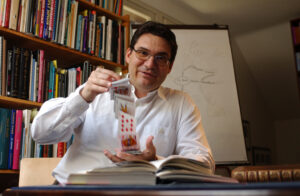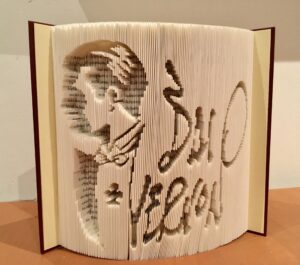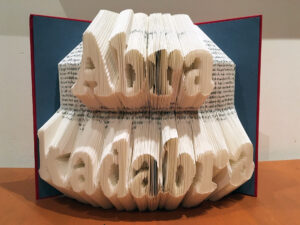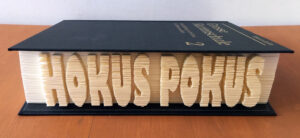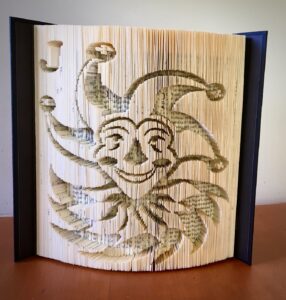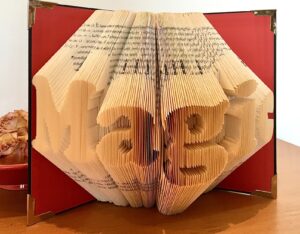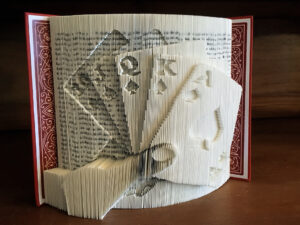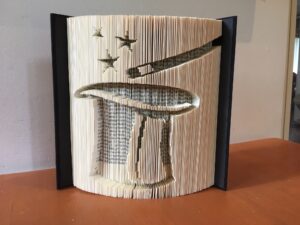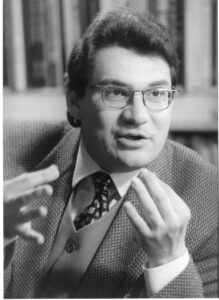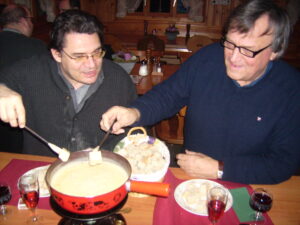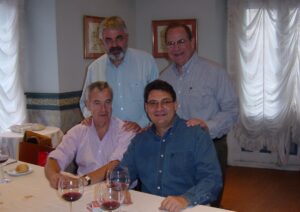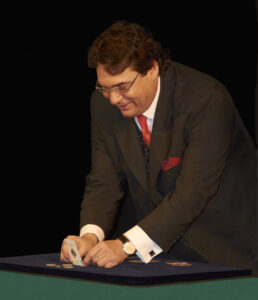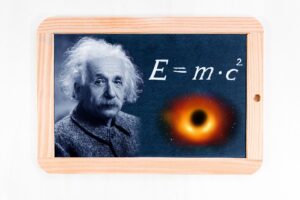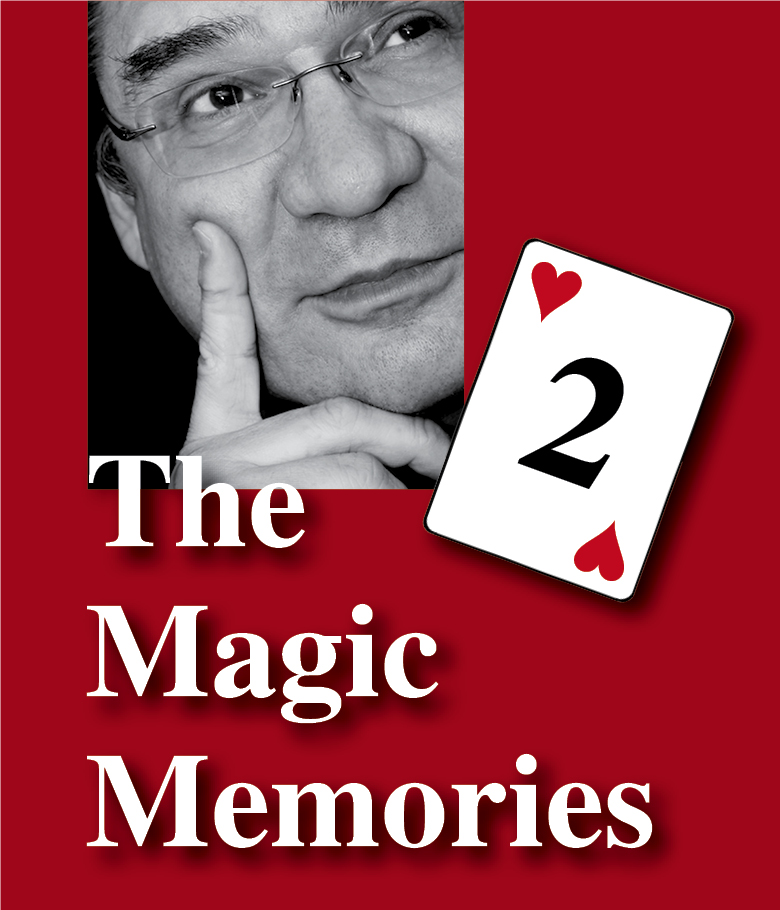
Hello everyone!
Here we are at number 16 of The Magic Memories, gone online SUN, 18th April 2021, at precisely 0:07.
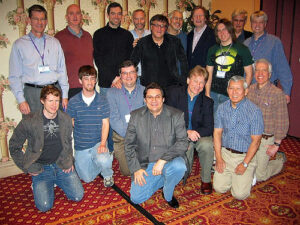
First and foremost a BIG THANK YOU to all of you who sat down to think of titles for my upcoming book and took the time to send them in. I received well over one hundred (!) tittle suggestions from the four corners of the world. It deeply humbles me to know that so many seem to consider reading these little ramblings worth their while. I must admit that many of the titles you sent in were really good ones and could have made it. I felt like the man going to his wine cellar, stocked with hundreds of different wines, but having to decide on one particular bottle for the dinner.
You might be interested to know that my first title was “52 Theories,” but several advised me against using the word “Theory” in the title because it would scare off potential buyers. Frankly, to this day I’m not convinced by this reasoning. Yes, most of us who practice magic are doing this as hobbyist or amateurs, in the sense that they do not do it for a living, so are more interested to learn new tricks rather than other things. However, my experience in decades of interacting with people in the world of magic, who come from all walks of life, is that the large part of them is very smart, well-educated and have broad interests, furthermore many of them are very successful in their jobs. Certainly, theory books won’t make up the larger part of their library, but almost all of them know when they hear and see an original and intelligent thought. And in my lengthy talks that focus a lot on the conceptional aspects of magic, I very rarely have people walk out. I have learned not to underestimate someone who practices magic only on the grounds that he or she is not a professional. Quite the opposite is true, some of my most interesting discussions have been with non-professionals, and there is a good chance that if you are reading this, you are one of those.
Anyway, back to titles. My next idea was “Sleight-of-Mind,” but that was taken by Macknik and Martinez-Conde. They came to my Masterclass at Larry Hass’s convention years ago, and in an interview I’m almost sure I mentioned this title, which is a term I’ve used occasionally in my lectures, inspired by NLP’s term “sleight-of-tongue.” Next was “Beyond Secrets,” until my proofreader Max Pritchard told me it was taken by Jay Sankey. And so it went.
Briefly, the title that I’ve eventually chosen is. “Sharing Secrets,” one I myself came up at some point, but eliminated because it is the slogan for the Slaight Awards. However, when I asked David Ben and Julie Eng, they graciously agreed to let me use that name, so I guess they should get the signed book! I hope you are not too disappointed that I didn’t pick your suggestion; please know that I truly appreciate you having participated, and I hope that I can make good through the content of these Magic Memories – if I manage to do this for a full year – and I’m determined to do so. Still, the book is not finished yet, another few hours of rereading and checking, plus hoping for Barbara or Francesco to do the magic on the cover design. I hope that next week-end I can tell you, “The book is at the printer’s!”
Which brings us to this week’s offering, namely three recommendations – I hope you find this interesting for a change.
First, Benji Wilkins of “The Daily Magician” fame wrote in to say: “If you want some great content for the blog, we’ve set up a resource with 24 public domain/copyright free magic books that magicians can read for free. To get them, they just have to enter their email on the page below and sign up to our newsletter: https://thedailymagician.com/classic-books. We’d appreciate the emails, and hopefully your audience will appreciate the books.” End of quote. Well, have a look, and I believe several among you should be pleased.
Second, is sending you to TCC, my Chinese publisher, and their new webshop. See how you like their newsletter: they keep putting excellent products on Kickstarter, which you might enjoy (they did my wonderful Card College Playing Cards Collector Sets and the normal Card College Playing Cards). I particularly like their “Accessories” section, which you can access if you CLICK HERE. I’ve just reordered their “Packet Wallet” ($ 4.95), several Leather Card Clips ($ 15) and their “Accordion-style Multifunction Bag” ($ 22), which I find very useful to put a deck on one side, and on the other side special cards matching the deck. Shipping is free from $ 50, with the exception of some heavy items, but even then it’s a bargain.
Third, is an immaterial recommendation. If you do not know Victor Borge or George Carl, you’re in for a treat. I will readily admit that most of today’s “comedy” performers leave me cold. But Borge, well, that’s another universe, in my opinion. A big, big lesson in how skill and competence beats anything else. There is not one political or topical joke, all is situation comedy, and it is hilarious. Also, you’ll understand most even if you are not a native speaker of English. For a good start on Victor Borge, CLICK HERE. And for George Carl, who mostly lived on one act, just enter his name in Google and you’ll be spoilt for choice. I remember how Gaetan Bloom many years ago at a magic convention, in one of our night-long sessions, mentioned the two names to me, which I had never heard of. It was one of my most memorable discoveries.
OK, folks, that’s it for today – I’m off to another few hours of checking and fighting with my book. I should have kept a diary titled “The Pleasures and Sorrows of a Magic Writer”, certainly a book nobody would want to read 🙂
Have a great week!
